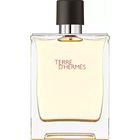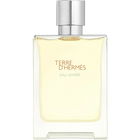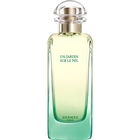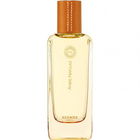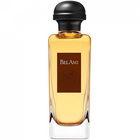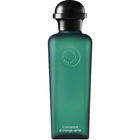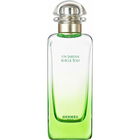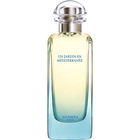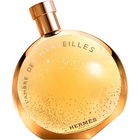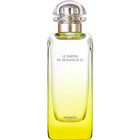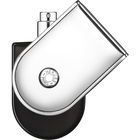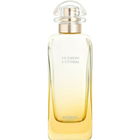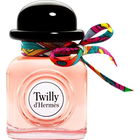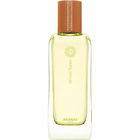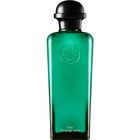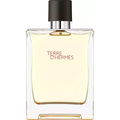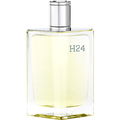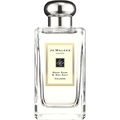Rhubarb is a paradoxical note from a perfumery perspective: the more natural the scent - not of the compote, not of the cake - of fresh, juicy, sour rhubarb is captured, the more synthetic it appears in perfumes: metallic, harsh, blunt. The great joker among perfumers, Mark Buxton, enjoys such paradoxes and visibly delights in using rhubarb in his perfumes, teasing out the hard, metallic aspects.
Now, Christine Nagel is not Mark Buxton, and Hermès - is just Hermès. Therefore, similar to a strawberry-rhubarb jam, in this fragrance, rhubarb is accompanied by other fruits to soften the harshness a bit and push back the synthetic impression. I briefly perceive some grapefruit, then raspberry, and I waver between apple and pear. Before I can decide on one of the two core fruit types, the previous impressions merge into a new picture: champagne. Fruity, fresh, sparkling. Now, almost inevitably, a rose accord must appear (if you're wondering why: patience, my comment is still long). And so it is. A rather watery rose, dewy fresh and cheerful. Somewhat synthetic in appearance, but not unpleasant, rather intriguing. I think of a red rose, not a pink one. Whether this is the influence of the color of the exceptionally beautiful bottle or not remains to be seen. In any case, "Eau de Rhubarbe Écarlate" does not completely traverse the path from fruit to rose but remains between the poles. Sometimes I perceive the rose more strongly, at other times the fruit. Then, as a hypothetical fruit-rose blend, rose hip. Again, champagne. This shimmering fluctuation between the impressions has something very stimulating, cheerful, and relaxed about it. The fragrance plays with not wanting to commit. And not being able to be pinned down. The cheerful phase of indecision between fruit and rose shapes the Cologne all the way to the base. There, a musk joins in, fortunately a rather creamy one (probably from the ambrettolide) and not powdery. On one hand, I much prefer creamy musks, and on the other hand, good Blanc-de-Blancs champagne has a beautiful creamy texture, and it would be a shame if the champagne theme were not also picked up in this way. Furthermore, at least ambrettolide has fruity facets that remind of shriveled apples, allowing the fruit to be carried into the base.
And so the fragrance also fades: a fruity rose or a rosy fruit or champagne on a bed of creamy musk.
I find it quite difficult to assess WHEN "Eau de Rhubarbe Écarlate" actually fades. If I wear it in the afternoon or evening, I can still perceive the complete fragrance in the morning after waking up, meaning not just base fragments. Although close to the skin, it has a remarkable longevity, outstanding for a Cologne. On the other hand, after about 2 hours of wear in a scent-laden everyday life, I feel an urgent need to reapply because I smell too little of the perfume. I probably just get used to this Cologne very quickly and no longer perceive it on myself. Of course, "Eau de Rhubarbe Écarlate" qualifies as a summer vacation scent: whenever a freshness kick is desired, it can be happily reapplied or splashed on without the risk of drowning in one's own perfume mist. The Cologne test is thus passed.
One question remains: why do perfumes with a champagne note almost always also smell of rose? Here, a deeper exploration of the chemical composition of a rose note helps to explain. Perhaps it is the olfactory richness of the rose that makes it the queen of floral notes: a rose does not simply smell like a flower. There is always something green to be smelled, like leaf green. A lot of fruitiness; perhaps the rose is the fruitiest of all floral notes. Honey.
If one analyzes the scent compounds of a rose, the most frequently occurring ones are the same as those found in, for example, geranium, lily of the valley, or hyacinth. The differences from these flowers are due to compounds that make up less than 1% of the rose essence. On one hand, rose oxide with a floral-green scent profile, on the other hand, a class of compounds called damascone and damascenone. These are responsible for the distinctly fruity character of the rose. Pure, these so-called "narcotic fruity-floral" damasc(en)one scent compounds remind one of grape, blackcurrant, and dried plum alongside rose.
Knowing how the scent of the rose "works," and the synthetic reproduction of the scent-determining components not only allows for the faithful recreation of rose scents but also provides the opportunity to alter a rose accord - for example, when one tries to assemble an accord that is still recognizable as a rose with as few individual substances as possible, it will be a transparent rose. However, if certain aspects (fruity, green, honey) are to be emphasized and brought to the forefront, this can be realized by changing the ratios of scent substances compared to natural rose: The first example, where the fruity damascone or damascenone was massively overdosed, is E. Fléchier's "Poison" with a tenfold increased concentration compared to its occurrence in natural rose oils. Thus, one first only smells the fruity aspects of the rose, which are gradually completed. At even higher concentrations, in a context of fresh notes, such damascone-shaped rose accords take on something sparkling and strongly remind one of the scent of champagne. A. Goutal's "Ce Soir ou Jamais" and S. Constant's "Dom Rosa - Eau Sanguine" are examples of this, and I find the start of the latter quite enchanting, and it is very similar to that of "Eau de Rhubarbe Écarlate"; similar in terms of the cheerful fruity start, the sparkling transition that evokes the champagne impression, and the hint of a watery rose that always remains just a hint and never fully blooms. Later, differences become clearer: while "Eau Sanguine" becomes smokier, the scarlet rhubarb remains more fruit-focused.
If I try to summarize the character of this perfume in one word, I simply have to count the adjectives in the above text: "cheerful" appears most frequently. Thus, "Eau de Rhubarbe Écarlate" fits excellently into the Hermès Eau de Cologne series. Cheers, Christine Nagel!
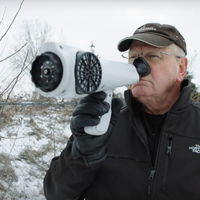




 Rhubarb
Rhubarb West Indian lantana
West Indian lantana White musk
White musk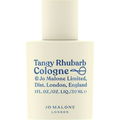







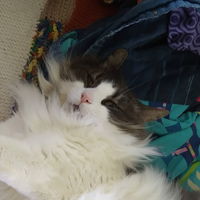





 Lillibet
Lillibet BertolucciK
BertolucciK AdrianPapaki
AdrianPapaki Firooz
Firooz dragon202
dragon202 FizzyDrink
FizzyDrink Sleepychypre
Sleepychypre Lauartistic
Lauartistic Rachelg
Rachelg Danny264
Danny264